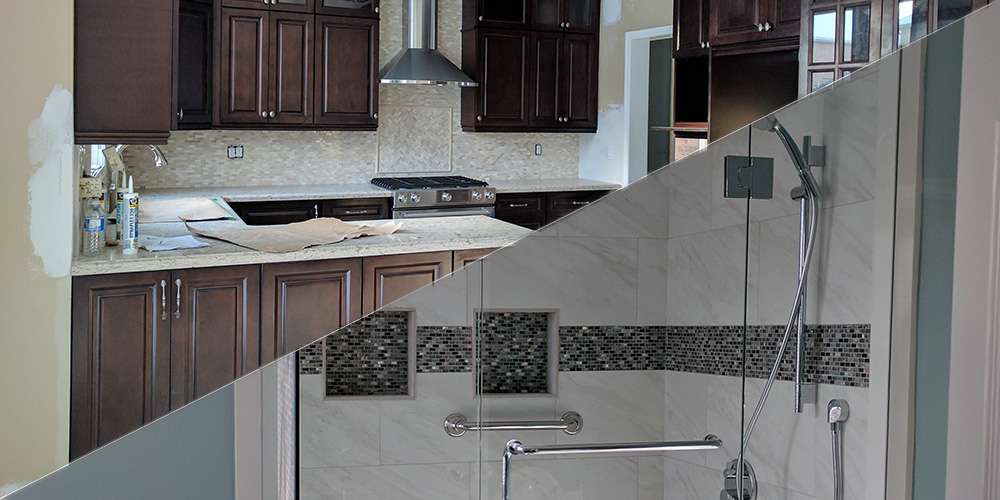In today's rapidly changing world, the concept of home renovation has transcended beyond mere appearance. It has become a key aspect of creating spaces that are not only aesthetically pleasing but also functional and flexible for the long term. Property owners are increasingly realizing the importance of creating environments that suit to their evolving needs, ensuring that their houses remain practical and relevant for years to come. From the latest trends in eco-friendly materials to smart home features that improve everyday living, the options for renovation are vast and exciting.
If you are planning a major renovation or just seeking to make minor updates that can change your environment, understanding the basics of home remodeling is essential. This guide offers insights into efficient planning, budgeting tips, and the latest trends to keep your home stylish and functional. Whether you choose to take on the project yourself or hire professionals, knowing how to manage the world of home renovation will empower you to create a place that reflects your lifestyle and values while preparing for the long term.

House Redesign Basics
As you starting a home renovation project, it’s essential to formulate a concise plan that articulates your aims, financial plan, and schedule. Start by reviewing your current environment and determining which sections need enhancement or modification. Think about factors such as efficiency, aesthetics, and potential market value. Explore find out this here in house architecture to motivate your concept and assist your choices. Creating a detailed plan not only supports simplify the procedure but also minimizes costly errors down the road.
Cost estimation is a crucial aspect of any renovation project. Learning how to remodel your home on a financial restriction will enable you to optimize your expenditure while attaining your goal results. Begin by establishing a feasible cost estimate that accounts for supplies, work, and surprise outlays. Look for ways to minimize expenses without compromising quality, such as sourcing materials from local suppliers or opting for DIY solutions in certain aspects. Remember to consider the likely return on investment, as some renovation endeavors will offer higher economic rewards than others.
Ultimately, choosing whether to take on a remodel yourself or engage a professional is a notable consideration. Consider the benefits and drawbacks of do-it-yourself versus professional service, taking into account your capabilities and the scope of the project. Though do-it-yourself jobs can reduce money, employing a experienced contractor often guarantees excellent work and conformance to local regulations. Take educated choices based on your individual goals, the scale of the renovation, and your cost restrictions to ensure a successful makeover of your house.
Developments and Innovations
Home remodeling is experiencing various movements and innovations that mirror evolving ways of living and choices. One of the most significant movements is the change toward green practices. Green renovation projects, such as incorporating green materials and energy-efficient technologies, are becoming more and more popular. Residents are now favoring renovations that decrease their environmental impact, cut utility expenses, and support a more sustainable living environment. The addition of solar panels during a remodel is also on the rise, allowing homeowners to harness solar power while enhancing their property value.
Additionally, the increase of smart home technology is redefining the way we engage with our residences. From automated lighting and climate control to advanced security systems, integrating smart features into home renovations can greatly enhance comfort and functionality. As property owners seek to create a more connected environment, remodels are increasingly focused on integrating these technologies fluidly into their current structures. This shift not only improves daily activities but also attracts potential buyers, making properties more attractive in a crowded real estate market.
Finally, the concept of multi-functional spaces is becoming a key emphasis in home design. As many people continue to prioritize working from home, the need for functional yet stylish spaces has never been more essential. Rooms that can serve varied functions, such as home offices that double as guest bedrooms or recreation spaces that transform into entertainment spaces, are highly valued. This innovation taps into the idea of versatility, allowing property owners to optimize their space while addressing their changing needs over time.
Budgeting and Cost Management
Overseeing your budget effectively is crucial when planning a home remodel. Start by establishing a realistic budget that covers all elements of the project, from supplies and labor to permits and unforeseen costs. A good rule of thumb is to allocate an additional 10 to 20 percent of your funds for unforeseen expenses. This enables you to address any surprises without derailing your entire plan. Break down costs by room or feature, which aids in comprehending where your money will be spent and allows for adjustments if needed.
Next, rank your remodeling goals. Determine which components of your project are necessary and which can be viewed as upgrades or extras. Focus on remodeling projects that provide the highest return on investment while also aligning with your lifestyle needs. For example, kitchen and bathroom remodels typically offer higher ROI compared to aesthetic upgrades. This method not only assists in sticking to your budget but also ensures you’re making intelligent financial decisions that will benefit you in the long run.
Lastly, explore various financing options to enhance your remodeling budget if necessary. Investigate home improvement loans, grants, or even saving plans that can help fund your project. Additionally, think about cost-saving tips such as tackling smaller DIY projects, sourcing materials from wholesalers, or even considering eco-friendly options that can reduce energy costs in the long run. By organizing carefully and remaining strategic about your spending, you can effectively manage your remodel budget without compromising quality or style.
